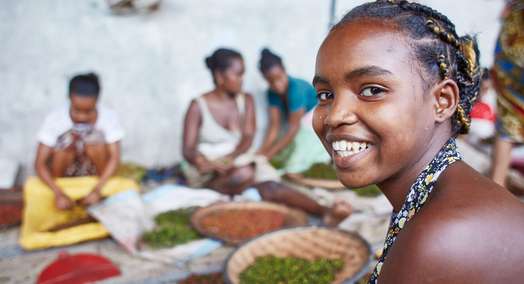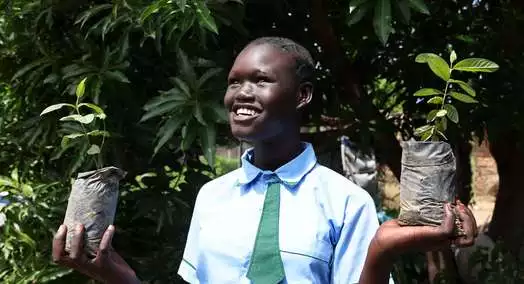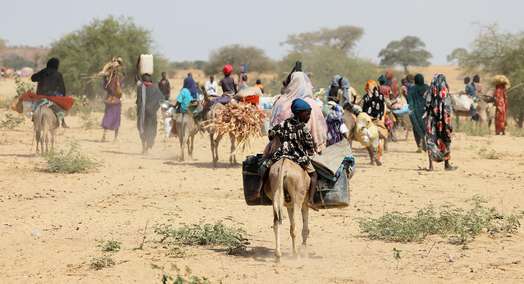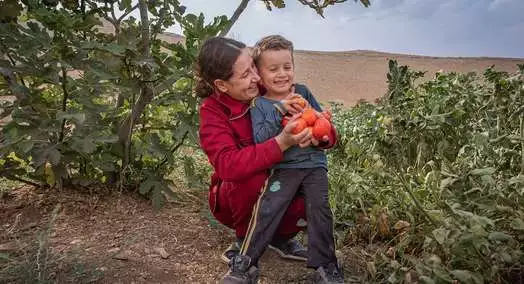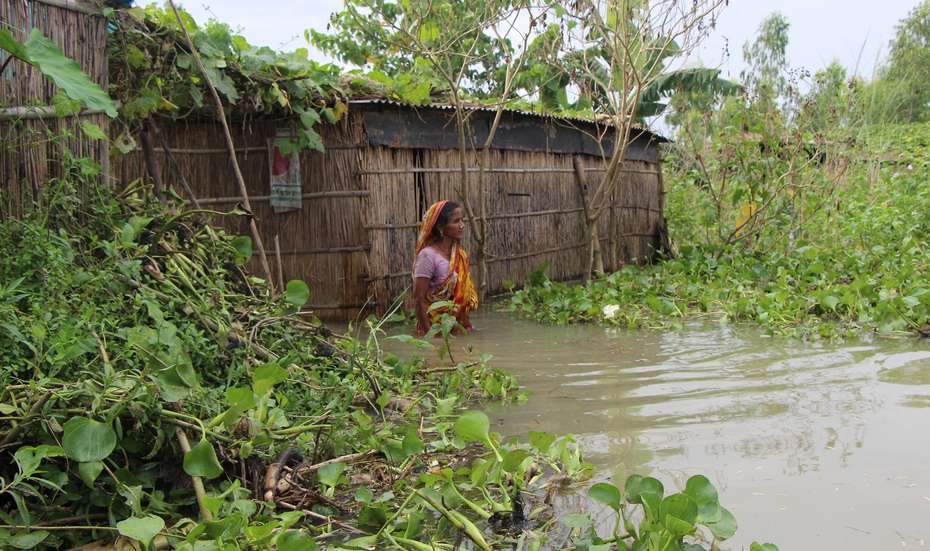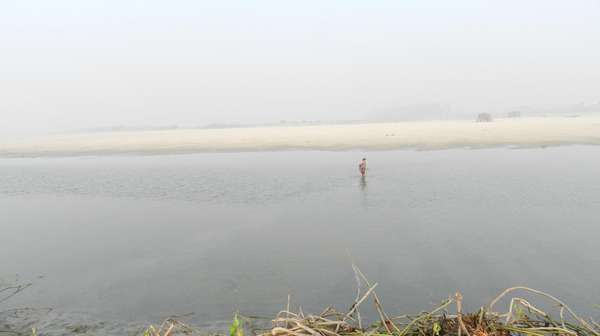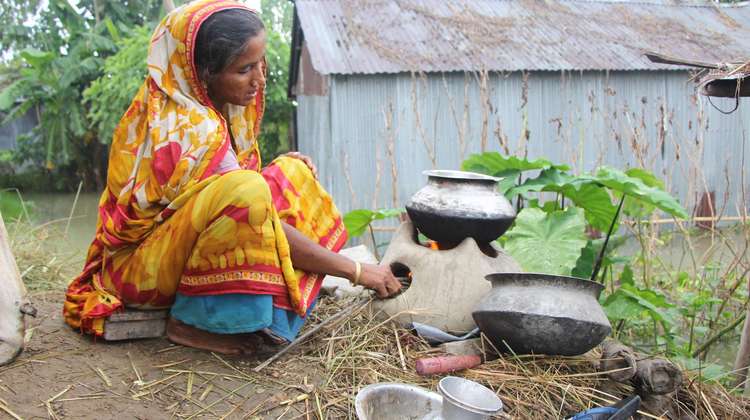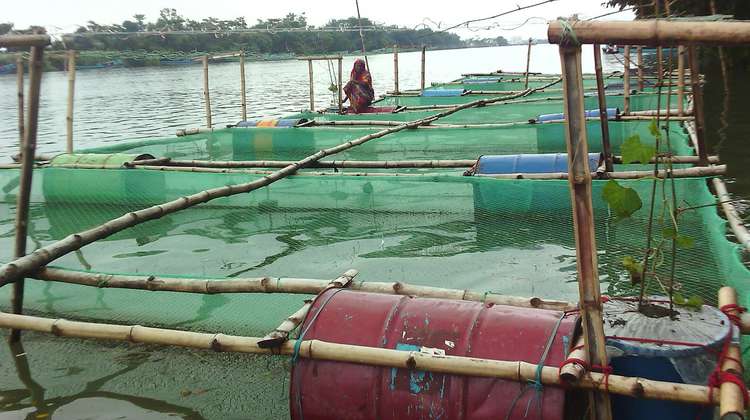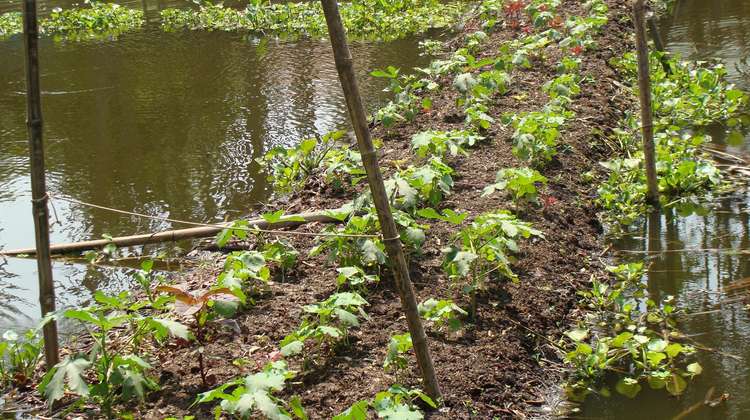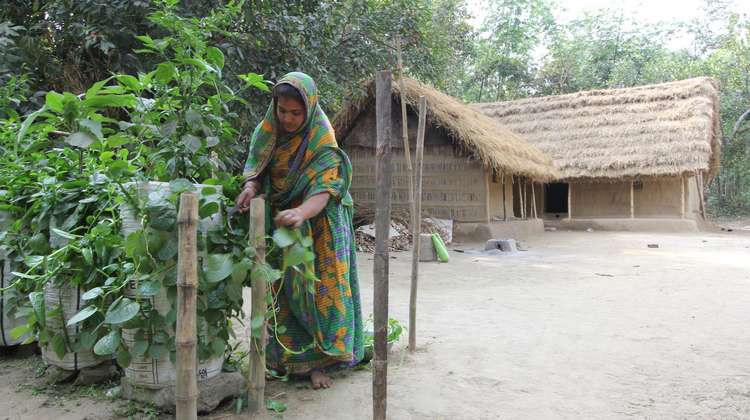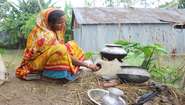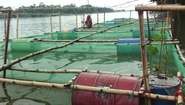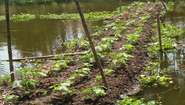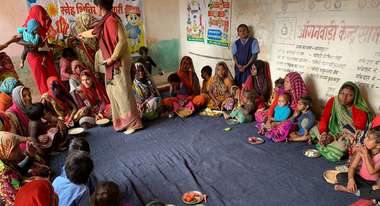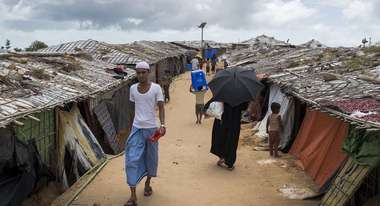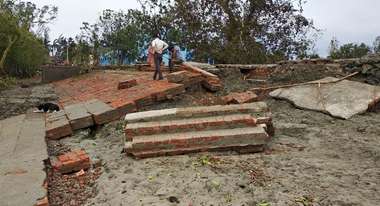"We are like fish. Water is not new to us, but now it’s destroying our crops."
Fighting the Effects of Climate Change with Innovations
Extreme weather destroys harvests and therefore livelihood of small farmers in Bangladesh. The solution: Vegetables that float on water.
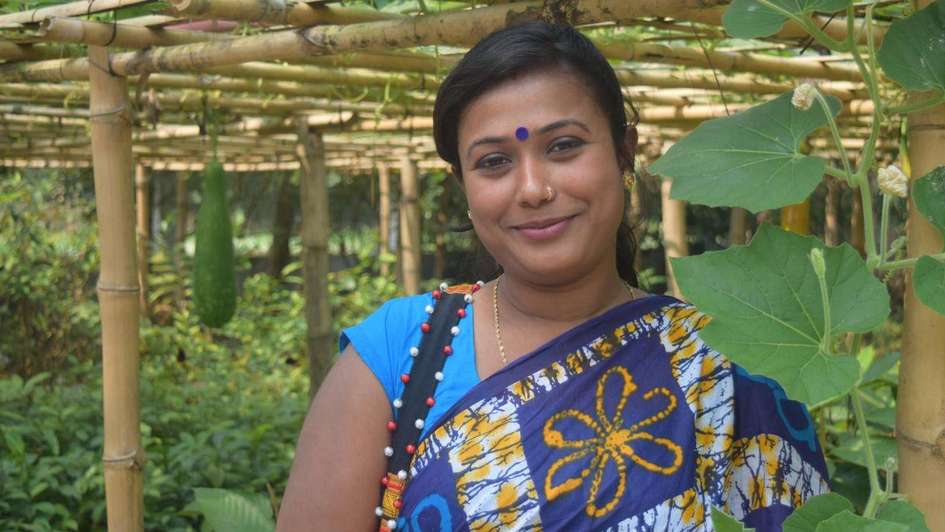
When the water level of the Jamuna river in north western Bangladesh rises after heavy rain, the Begum family gets its feet wet. Literally. The water in their bamboo and straw hut reaches their ankles. They need to find dry quarters as soon as possible and do not have time to save the vegetables in their fields. Their situation is not unique in this densely-populated country.
Extreme Weather Events Destroy Livelihoods
Only a few metres above sea level and criss-crossed by a large amount of rivers, Bangladesh is particularly vulnerable to the effects of climate change. Hurricanes and torrential rain with flooding are increasing in frequency. They destroy homes, crops, water supply and sanitation, creating and exacerbating food shortages.
Food and nutrition security is under strain in the lower-lying rural regions in the northeast and on the river islands of the Jamuna, which are constantly changing their shape and position in the current. Here, Welthungerhilfe is supporting around 10,000 smallholder households in 50 villages.
The Solution: Vegetables That Can Float and Move
How can plants be protected from destruction by flooding? By making them float. Bamboo rods and water hyacinths are woven together to form a raft, and layers of mud and dirt then create fertile plots of land floating on the surface of the water. Spinach, okra, turmeric, potatoes and amaranth grow particularly well. Planting sacks are used as well. They require little surface area and allow plants such as paprika, eggplants, tomatoes, cucumbers, pumpkins and leafy vegetables to be moved if necessary. The innovations in their village are giving Mrs. Begum hope. “Until now, we were never able to afford two meals per day, the house is too small and there was no drinking water. Now, I am confident that everything will turn out well!”
How Welthungerhilfe Supports People in Bangladesh
- Innovative cultivation methods and seeds customised for the climate and location ensure higher crop yields. Rice farmers in the basins of the district of Netrokona, for example, are testing a fast-growing new variety that can be harvested earlier, i.e. before the rainy season.
- In order to prevent floods from destroying the plants, crops are planted on the water.
- In training sessions, project participants are introduced to new methods of animal husbandry, such as integrated fish or duck husbandry that can be combined with rice cultivation.
- The smallholder families will form two cooperatives to provide each other with long-term support in producing, processing and marketing their agricultural produce, for example by sharing milling and packaging tools.
- Current information regarding weather and climate is being provided over mobile networks for disaster risk reduction, sustainable water and waste management efforts are being promoted, and seed banks and community vegetable gardens are being established.
- Health workers are creating action plans to lower undernourishment rates amongst children. At the same time, there are initiatives such as nutrition consultations, cooking classes and health education sessions designed specifically for women and mothers.
